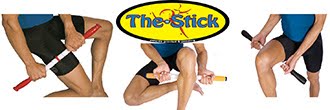When was the last time you heard of a “Calf
Heart Attack?”
It may have been a while, if at all…but it’s worth mentioning
again. If you don’t know about it, it’s been dubbed “a weird but serious injury.” (Parker,
1996, Running Times)
A ‘calf heart attack’ isn’t directly related
to the heart muscle – but here’s how it’s like a heart attack: the outer sheath
surrounding the gastrocnemius (calf muscle) isn’t flexible enough to handle the
increased blood flow to the area during exercise. When this happens, the sheath
can’t expand to accommodate the extra blood, and the swollen gastroc doesn’t
have enough room within the constriction…and that can often become problematic,
sometimes causing micro-tears (or larger) within the calf muscle. Eventually,
when those torn fibers heal, they’re re-enforced with scar tissue (which is
less flexible than the original muscle tissue), and that often leads to another
injury. It’s a recipe for cyclical tears and recurrences…and pain.
It’s not the same as a calf pull. For those
of you who have pulled a calf, that sensation is a true muscle pull, and it can
be debilitating; but the “calf heart attack” is a deeper-rooted pain caused by ripped
fibers that take longer to heal and are often susceptible to continued re-injury.
John L. Parker, Jr, associate publisher and
editorial director of Running Times
magazine, was a sufferer of this type of repetitive injury until he realized
that he needed to treat it differently – and regularly – with purposeful attention
and care. His treatments included down time for healing, cautious re-entry into
running, attentive stretching, and regular massages with The Stick.
In addition to his normal routine, he gave
focused care to those micro-rips deep in the gastroc. They needed this extra attention
to promote true, long-term healing.
So if you, too, have been having recurrences
of a deep calf injury that won’t seem to go away, think of the micro-tears
associated with a calf heart attack. It’s not a muscle pull and it won’t heal
the same way. Allow your calves ample time to rest and recover before starting
your running/exercise routine; begin again slowly with caution and ease; and be
sure to stretch and massage the calf, encouraging fresh oxygenated blood flow
to move deeper into the area in order to activate targeted and thorough healing.
Then repeat on a regular basis.
It’s an oldie but a goodie – watch out for
“calf heart attacks,” and don’t let them hold you back.
TeamStick Insider


No comments:
New comments are not allowed.